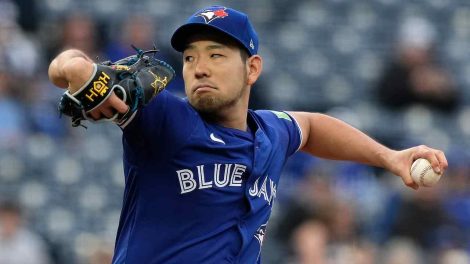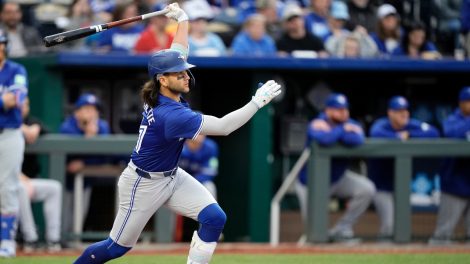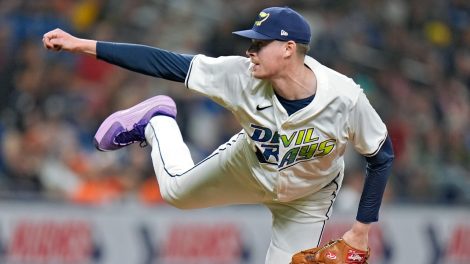There’s something irresistible about the trade deadline, and the seasonal euphoria that comes over fans as speculation reaches a fever pitch.
Trades can fundamentally change the trajectory of a team’s fortunes, either in the short term or over many years, and given the perpetual unease that the uncertainty of sport engenders, these strategic personnel shifts can truly change the mood of a fanbase.
It certainly helps to create excitement that baseball is mostly unencumbered with salary cap issues, so trades are mostly about shifting current value on the field for future value on the field, with money as a secondary consideration.
Over the decades, the Blue Jays have made many notable deadline deals, some of which worked, and some of which faltered. Some were attention-grabbing in the moment, but didn’t end up contributing that much, where as others were deals that seemed inconsequential at the time, but made significant impacts, especially to the back-to-back champion years.
Here are a few of my personal favourite deals, for better or for worse.
July 6, 1986: Blue Jays trade Doyle Alexander to the Atlanta Braves for Duane Ward
Alexander had been a key piece to the 1985 pennant winners, and was the man in the iconic picture being held aloft by teammates after their pennant-clinching win.
The next season, however, Alexander struggled, as did the Blue Jays, taking an unexpected step backwards. The Boston Red Sox had surged ahead of the AL East, and the Jays languished in fourth, 9.5 games back.
At the time, most fans would have had very little concept of who Duane Ward was, or what his capabilities would become. No one knew how he graded out on a 20-80 scale, and few would have seen him pitch that season for the Atlanta Braves. At most, we knew that he was a young pitcher who was a little bit wild, and a bit raw.
In retrospect, we can look at Duane Ward as one of the most electrifying relievers in the team’s history, and an invaluable piece of those championship teams. But it took a few years for fans to get past the idea that this was the guy they traded for Doyle Alexander, a point made all that much worse when the veteran lefty went 9-0 with a 1.53 ERA down the stretch for the 1987 Tigers, including two painful losses for the Blue Jays in the final week of the season.
Aug. 9, 1987: Blue Jays trade a player to be named later and Darryl Landrum to Cleveland for Phil Niekro
By the time he was 48, Phil Niekro was already a legend of the game, on his way to Cooperstown and an entertaining oddity as part of a pair of knuckleballing brothers.
The 1987 Blue Jays may have been the best team assembled to that point in the franchise’s short history, but after Jimmy Key, Jim Clancy and a worn-down Dave Stieb, they were struggling for pitching depth down the stretch.
For those who pine for the days of the four-man rotation, this is what it led to: Mad scrambles to find anyone to fill in.
As much excitement as there was for genuine baseball royalty to arrive in Toronto, Niekro’s stay was ugly, brutal and brief. He managed just 12 innings over three starts, posted an 8.25 ERA, and walked as many batters as he struck out. He was summarily released on Aug. 31.
Aug. 31, 1987: Blue Jays trade a player to be named later and Oswaldo Peraza to the Baltimore Orioles for Mike Flanagan. The Blue Jays send Jose Mesa to the Orioles to complete the trade.
Goodbye knuckleballer, hello crafty lefty.
To some extent, Flanagan was another pitcher on the downside of his career, although at 35, he certainly wasn’t as long in the tooth as Niekro.
An All-Star and Cy Young winner who had recently led the Orioles to their 1983 World Series, Flanagan was still a name and something of a saviour to a rotation that was gassed. Moreover, Flanagan found his form in those final seven starts for Toronto, posting a 2.37 ERA and pitching valiantly against the Tigers in the finals weeks of the season.
In that fateful final series, Flanagan threw an incredible 11 innings, giving up just one earned run only to see the Jays fall in the 12th.
And yes, that was José Mesa, THE José Mesa who went the other way.
July 31, 1989: Blue Jays trade Mike Brady and Jeff Musselman to the New York Mets for Mookie Wilson
After a 1988 season in which he made no significant changes to the roster at the deadline, Blue Jays GM Pat Gillick had been tagged with the pejorative nickname “Stand Pat”.
The Blue Jays were also mired in their fourth consecutive seasons of perceived underperformance, unable to return to the post-season after their 1985 AL East pennant. The Jays replaced their manager early in the season, and had been playing better baseball since. But they were still sitting at 52-53, though just three games behind the first-place Orioles.
At that point, Mookie Wilson was a popular and well-regarded player who was reaching the end of his prime. Nevertheless, his arrival in Toronto provided a spark on the field and in the stands, and created much-needed excitement for a team that may have been losing the fans.
In an era when batting average still mattered most, Wilson posted a .298 mark in 54 games down the stretch. He also helped to fill a void created when Jesse Barfield was dealt earlier in the season, and presumptive successor Junior Felix’s game fell off, and Rob Ducey was hurt.
The Jays went 37-20 after the Mookie trade, and made their return to the postseason against the mighty Bash Brother era A’s. And though he is seemingly forgotten in Jays lore these days, Mookie Wilson was the fan favourite through that run.
[relatedlinks]










